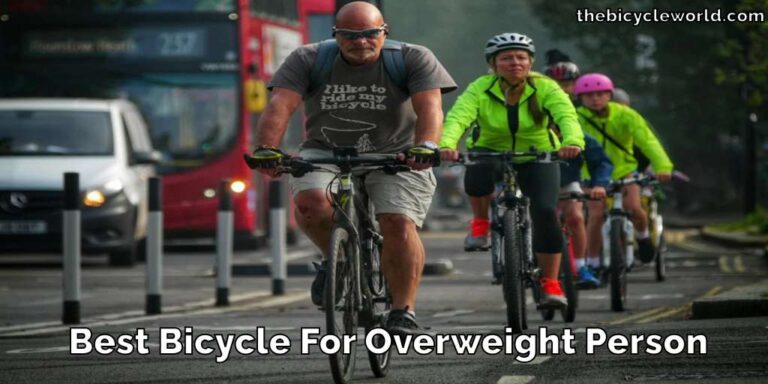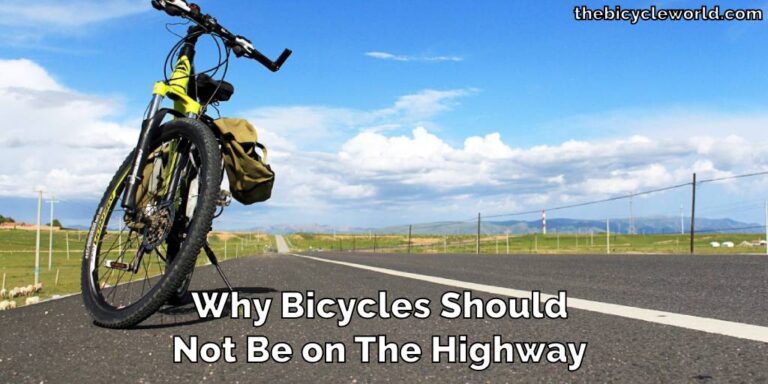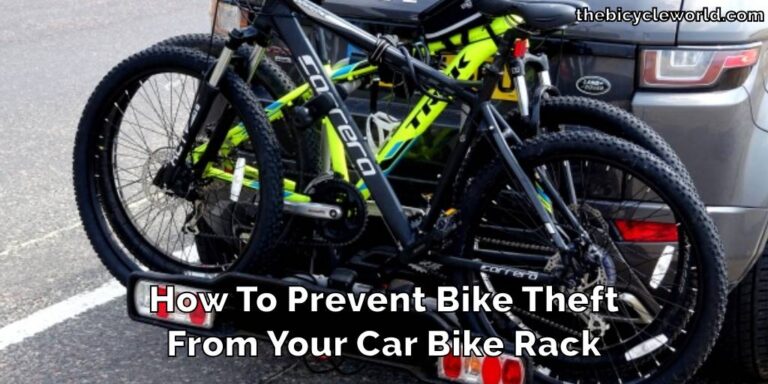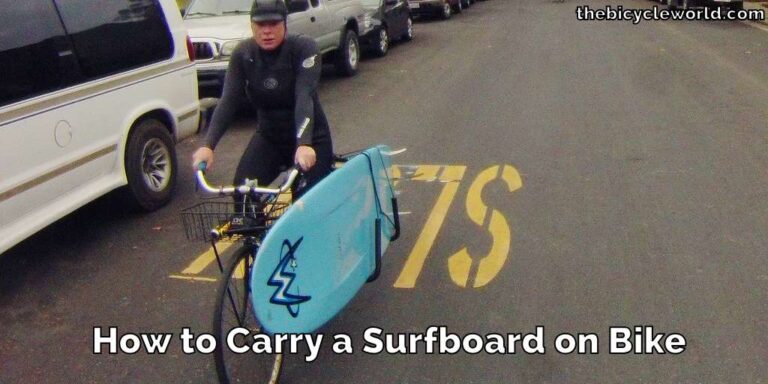How Fast Can You Drive with A Bike Rack and Bikes
Introduction
When planning a cycling adventure, a common question arises: “How fast can you drive with a bike rack and bikes?” This query is crucial for cyclists who rely on vehicle-mounted bike racks.
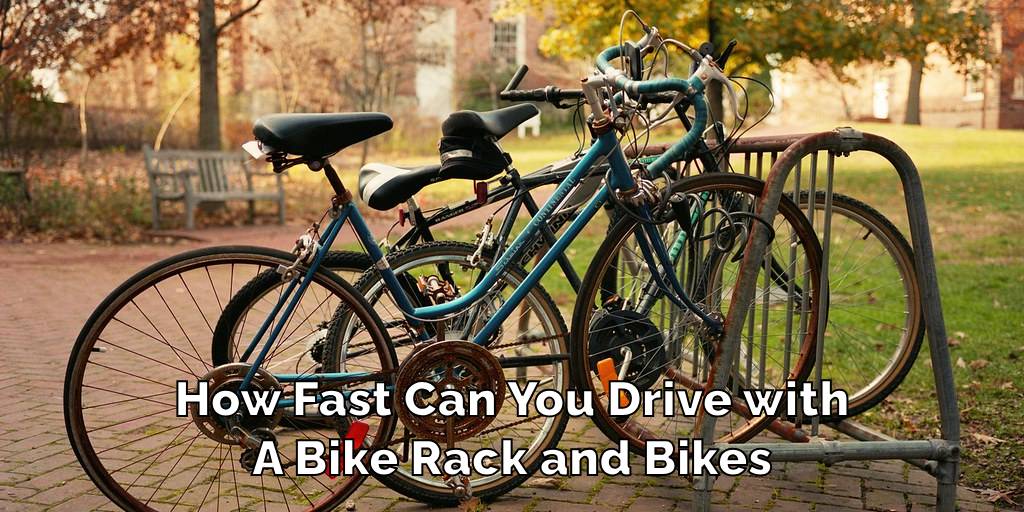
The answer isn’t straightforward, as it depends on various factors including the type of bike rack used, the vehicle’s dynamics, and road conditions. This article dives into these aspects, offering insights to ensure a safe journey while transporting your bikes.
Understanding Bike Racks
Bike racks, essential for transporting cycles, come in various types, each suited for different needs. Roof racks, mounted on top of a car, can influence how the car handles and uses fuel due to their impact on aerodynamics.
Hitch racks, known for their stability and strength, are attached to the vehicle’s hitch and can carry multiple bikes securely.
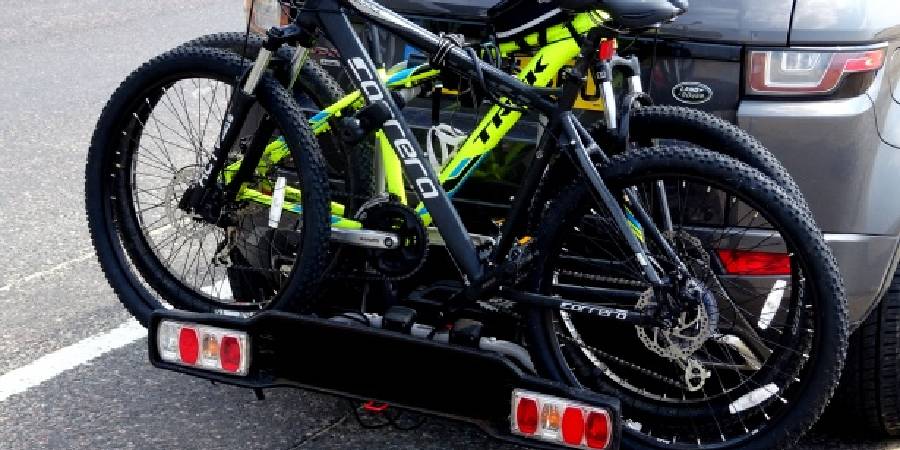
Trunk-mounted racks are an easier, more flexible option, perfect for occasional use, though they may affect access to the car’s trunk and aren’t as secure as other types. Each rack type offers a unique balance of convenience, security, and effect on driving. Understanding these differences is key to choosing the right one for your adventures.
Factors Affecting Driving Speed with a Bike Rack
When transporting bikes using a vehicle, it’s crucial to understand how different factors can impact your driving speed. Safety and efficiency are key considerations, especially when adding external elements like a bike rack.
Type of Bike Rack
Roof racks, while convenient, can increase air resistance or drag. This can slow down your vehicle and lead to higher fuel use. On the other hand, hitch and trunk racks may reduce rear visibility, necessitating a slower driving speed to ensure safety.
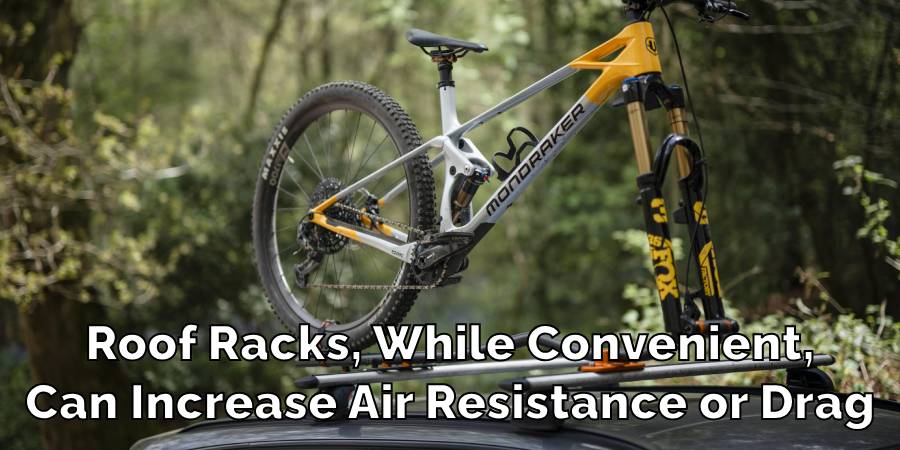
Weight and Distribution
The way bikes are loaded and their weight affects your car’s balance and handling. A heavier load or uneven distribution can shift the center of gravity, making your vehicle less stable at high speeds.
Vehicle Type
Not all cars are the same when it comes to carrying extra loads. Some are designed to handle added weight and changes in aerodynamics better than others. It’s important to consider your vehicle’s capabilities before hitting the road with your bike.
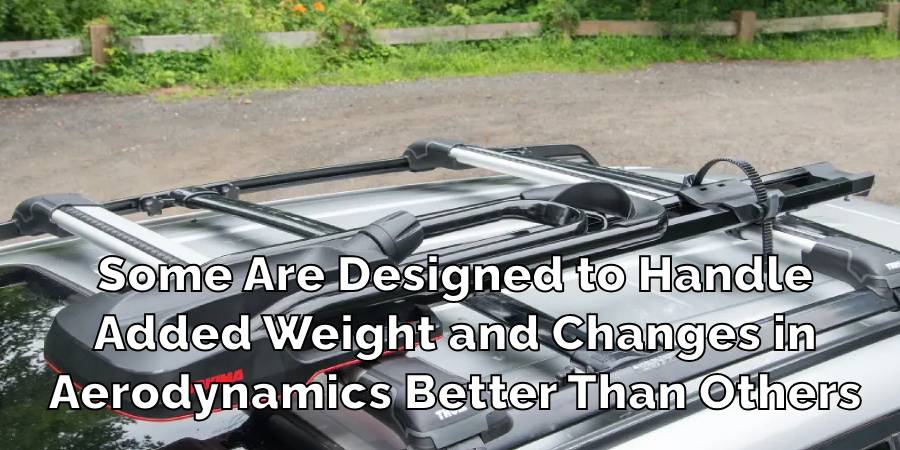
While bike racks offer a great solution for bike transportation, they also bring changes to your vehicle’s driving dynamics. Being aware of these factors ensures a safer driving experience while enjoying the convenience of having your bikes with you on your travels.
How Fast Can You Drive with A Bike Rack and Bikes
When driving with a bike rack and bikes, it’s safe to keep your speed similar to highway driving limits, typically around 55-65 mph. It’s important to drive carefully and check the bike rack’s manual for any specific speed recommendations. Remember, safety is key, especially when carrying an extra load.
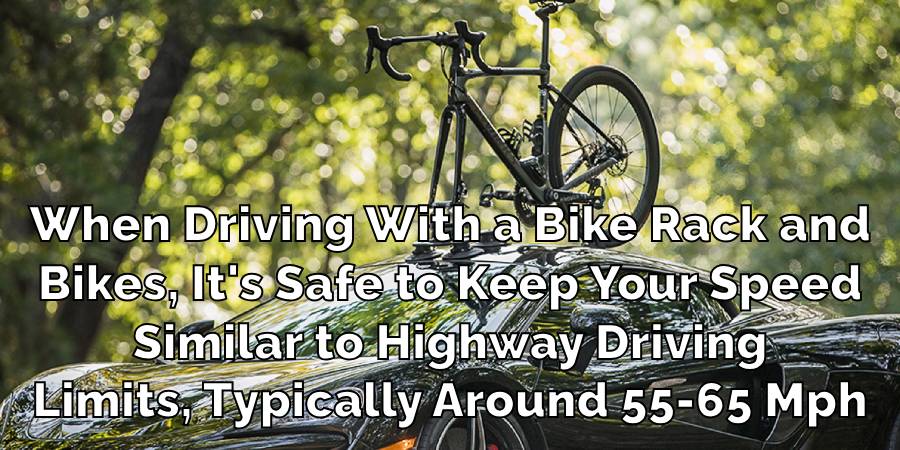
Weather Conditions
Bad weather can be tricky. Heavy rain, strong winds, or icy conditions significantly affect your vehicle’s handling and braking.
In such situations, it’s safer to drive slower than usual. This cautious approach helps manage reduced traction and longer stopping distances, ensuring that both you and your bikes remain safe.
Road Type
The nature of the road plays a big role too. If you’re driving on winding roads, through hilly areas, or on surfaces that aren’t smooth, it’s wise to reduce your speed.
This careful driving helps you maintain better control over the vehicle, especially with the added weight and altered aerodynamics due to the bikes. It also minimizes the chances of your bikes getting jostled or damaged.
Long Journeys
On longer trips, maintaining a steady, moderate speed is beneficial. Not only does this improve fuel efficiency, but it also puts less strain on your vehicle. Consistent, moderate speed helps avoid mechanical issues that could arise from the extra load of the bike rack and bikes.
While carrying bikes on a rack, it’s vital to adjust your driving according to these factors. Being mindful of the weather, the road type, and the length of your journey can make a significant difference in ensuring a safe and smooth trip.
Safety Precautions
When transporting bikes using a rack, it’s crucial to follow safety precautions to ensure a safe journey for you and your bikes:
- Regular Checks: Always double-check that both the rack and the bikes are securely fastened before setting off. This includes checking the tightness of all fixtures and making sure the bikes are stable. Periodic stops to re-check during long journeys are also a good practice.
- Adapted Driving Style: With bikes on your car, your driving style should adapt to the changed dynamics of your vehicle. This means allowing for extra braking distance, taking turns more gently, and being cautious with speed, especially on highways. The extra height and length from the rack and bikes can significantly alter how your vehicle handles.
- Clearance Awareness: Particularly with roof-mounted racks, be aware of the increased height of your vehicle. This is important to avoid collisions with low bridges, car park entrances, or tree branches. A good practice is to note the total height of your vehicle with the bikes loaded and keep an eye out for clearance signs.
By following these enhanced safety precautions, you can enjoy a worry-free journey with your bikes. Each step helps in protecting both your vehicle and bike, ensuring that you arrive at your destination ready for a great cycling adventure.
Alternatives to Driving with a Bike Rack
If you’re unsure about transporting bikes on your vehicle, or if it’s a long-distance journey, consider alternatives:
- Bike Rentals: Many destinations offer bike rental services. This can be a convenient option, saving you the hassle of transporting and securing your bikes during the journey.
- Bike Transportation Services: Some companies specialize in transporting bikes safely to your destination. This can be a great option if you’re traveling a long distance or if your vehicle isn’t suitable for a bike rack.
- Public Transport: Some trains and buses are equipped to transport bikes. This can be a cost-effective and stress-free option for certain routes.
By considering these safety tips and alternatives, you can ensure a smoother and more secure experience when traveling with your bikes.
FAQ’s
How Fast Can You Drive With a Bike Roof Rack?
Driving with a bike roof rack requires adherence to legal speed limits. However, it’s important to be even more cautious under certain conditions. In adverse weather, such as heavy rain or high winds, or on challenging road types like steep hills or sharp bends, reducing your speed is wise.
The added height and wind resistance from the roof rack can affect vehicle handling, so adjusting your speed accordingly is key for safe travel.
What is the Speed Limit on a Thule Roof Bike Rack?
Thule, a well-known bike rack manufacturer, advises customers to follow standard speed limits while using their roof racks.
However, for the best safety practices, they recommend checking their product manuals for any specific guidance related to different models. It’s also important to consider the impact of the rack on your vehicle’s performance and handle your vehicle accordingly.
How Many Bikes Can a Bike Rack Hold?
The capacity of a bike rack varies depending on its type and model. Generally, bike racks can carry anywhere from one to five bikes. Roof racks often carry fewer bikes than hitch or trunk racks due to space and weight distribution considerations. It’s vital to check the specifications of your specific rack model to ensure you don’t overload it, as this can affect safety and vehicle handling.
Is It Ok to Leave a Bike Rack on a Car?
While it’s generally safe to leave a bike rack attached to your car, removing it when not in use is beneficial. This helps improve fuel efficiency, as the rack can create additional drag when driving.
Additionally, removing the rack when it’s not needed reduces wear and tear on both the rack and your vehicle.
Are Bike Racks on Cars Safe?
Bike racks are safe when they are properly installed and used according to the manufacturer’s instructions.
It’s crucial to ensure that the rack is compatible with your vehicle and that it’s secured correctly. Regular inspections and maintenance of the rack and its fittings can prevent accidents and ensure the safety of your bikes during transport.
Conclusion
Understanding how fast can you drive with a bike rack and bikes is vital for anyone who loves cycling and road trips. It’s about more than just attaching your bikes and setting off. You need to think about how the rack type, weather, road conditions, and your driving speed work together.
By paying attention to these factors and following the safety tips shared, you can make sure your journey is both enjoyable and secure.
Always remember, the success of your trip lies in how well you adapt your driving to the added load and altered dynamics of your vehicle. With this knowledge in hand, you’re all set for a great adventure with your bikes.

